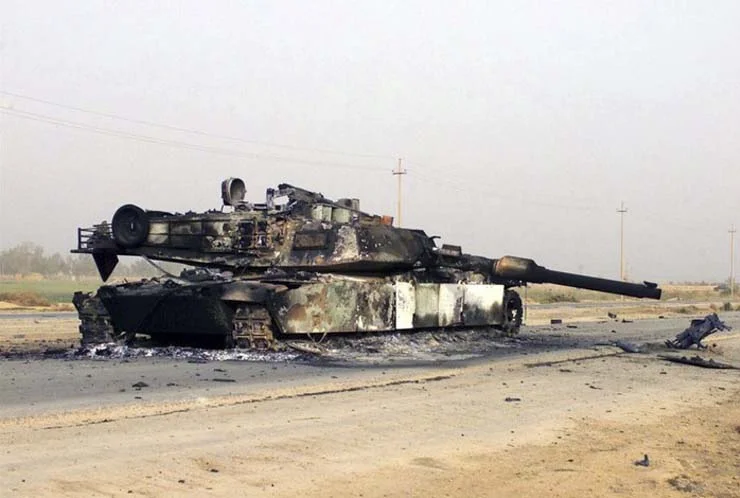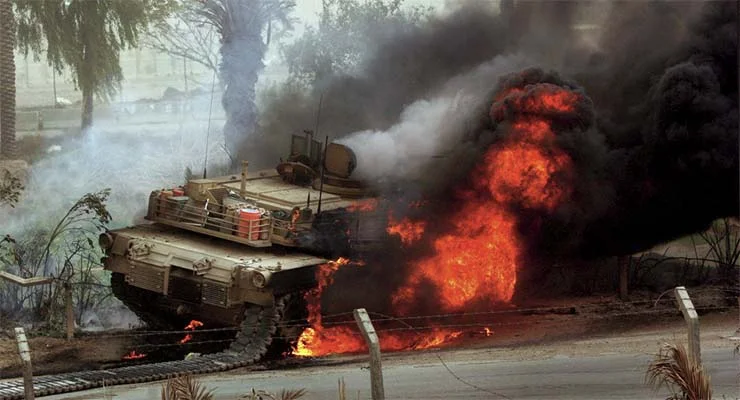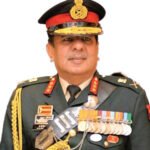“It is not the Big Armies that Win Battles…… It is the Good Ones”
-Field Marshal Maurice Comte de Saxe (1782)
Ukraine’s Panic call for Tanks
Ukrainian President Volodymyr Zelenskyy recently appealed to the West that additional armour would be crucial in the coming months, whether to defend against another major Russian onslaught or to launch a counter-offensive to regain the Russian occupied Ukrainian territory. Ukraine in its SOS call said it has a critical need for modern armour, in its war against Russia’s invasion, which is limited in both quantity and quality. It has presently limited availability of tanks, most of them from the Soviet or post-Soviet era. While Ukraine has won some tactical victories, more due to inept handling of tanks by the Russians – in the battle for Kyiv at the beginning of the war as well as in Kharkiv oblast and around Kherson in the south – it is hampered by a shortage of tanks to support its continued operations amidst deployment of more modern and capable T-90s tanks by Russia. Its urgent plea lies in its belief that Moscow intends to launch a significant new offensive in the coming months, which needs to be stalled, as also many of its allies believe that the war will end more quickly if Russia is defeated on the battlefield in Ukraine’s counter-offensives.
Tanks are back in the Race
The message was clear – the tank was back as an instrument of deterrence and a force of decision in the European battlespace. The chorus was joined by the West, which till recently had signed the obituary of the tank, killing more Russian tanks than those, which participated both in the Ukraine and the Second Nagorno-Karabakh War. The US announced that it would supply 31 Abrams tanks to Ukraine; hours after Germany had made a similar announcement for 112 Leopard II tanks. Then UK followed, stating it would send 14 Challenger II tanks. France did not want to remain isolated as a NATO ally and President Emmanuel Macron said he did not rule out sending the Leclerc tank. Somewhere picture of Sweden S Tank also emerged in the social media battle space. Alas, the Phantom rose from the social media grave!! Tanks are back in the reckoning and in the words of General Heinz Guderian: “If the tanks succeed, then victory follows.”
Numbers Sought and Key Players in the Field
Ukraine has suggested it needs 300 tanks, while Western analysts have suggested that 100 could probably shift the balance of war. While the tank biathlon for Ukraine got to the start line, the largest number remained US Abrams M1AI/II and German Leopard II. More than a dozen countries possess Leopard MK II; prominent among them are Poland, Sweden and Spain making both the logistics and availability easier.
While the US with over 5000 (2000 in service and 3000 in storage) Abrams and Germany with over 300 Leopard MK II have the capacity, they seem to have developed cold feet to both avoid escalation and not so to expose their fleet’s vulnerabilities. Their stance on sending tanks to Ukraine as a symbol of offensive capability has been sluggish, preferring a multilateral approach rather than being seen as unilateral militarism. Germany has thus tried to encourage the supply of Leopards to a wider coalition that would supply other tanks.
The T90 Versus Leopard and Abrams Debate
Meanwhile, the T-90 versus Leopard or Abrams social media battles have started to dominate the narratives of the future battles in Ukraine. Till recently it was the death knell of Russian tanks but now the West has been brought to the fore. Images of burnt M1 Abrams Tank and guidelines on where to hit the tank’s vulnerabilities and using what weapons, are finding increased social media space.


Tanks will kill and tanks will get destroyed. There is nothing such as invincibility in war. As a matter of fact, every system has a capability and a vulnerability to both exploit and deny. Armchair analysts often profess that the technically superior would be victorious. Ironically a tank is as good or as bad as its 5 T’s – Tankman, Training, Tactics, Terrain and Technology. This had stood the test of truth on the Ukrainian battlefield so far. Yet, it is not imaginable that Russia could have gained what it has without tanks in terms of space, force and time dimension, besides creating a psychological impact for Zelenskey’s SOS call for NATO tanks. Yet there are lessons which I have highlighted in my article “Eleven Big Lessons for the Employment of Tanks in Future Battlespace: Russia – Ukraine Conflict” and my interaction on “Russia Ukraine War. Is this the end of the road for Tanks?”
It may not be correct to compare a heavy tank like Abrams and Leopard to a medium category tank like T-90 or T-72. Yet technologically, when you compare Leopard II, a 60+ ton MBT with T90 a 40+ ton MBT, it has a more powerful engine, better transmission and possibly advanced and better connected sighting and fire control system. Yet, Leopard lacks operational and tactical mobility in the Ukrainian terrain, is more maintenance intensive and is less survivable. It must be understood that the tank design capabilities have moved from WW II legacy thoughts on mobility, protection and firepower to agility, survivability, lethality, maintainability, adaptability and connectivity.
Besides a secondary consideration that the T90 costs about 40% of the Leopard II A7, the T90 also comes off the production line much faster than the Leopard and also has a multi-fuel engine, meaning refueling logistics could be less demanding. Further, T90 with its missile firing capability will outgun and outrange the Leopard. It could also have higher survivability due to its silhouette in a hide-and-seek game besides a superior active protection system. Yet if both are hit, the Leopard is an inherently safer design, and its crew has a higher probability of survival compared to the T90.
T90’s smaller size, lighter mass, lower manpower requirement, simpler trainability and lower fuel consumption make it more suitable for operations in the Ukrainian environment. Thus, it has an edge over the Leopard. Similarly, Abrams is inferior to T-90 when it comes to logistics and multi-layered, multi-tiered survivability, even though it has an impressive frontal armour layer. It is also about 20 tons heavier than a T-72 / T-90 and has a turbine engine that guzzles a gallon of jet fuel for every mile travelled (or just over a quarter of a kilometer per litre). US Under Secretary of Defence described it as “a very complicated piece of equipment,” expensive, hard to train on and “not the easiest system to maintain.” Besides, T-90M is less visible, than M1AII and it is capable of firing ATGMs, which gives it a tactical engagement advantage. German Leopard II tanks are superior to American Abrams, but inferior to the Russian T-90 MS in lethality, agility, survivability and maintainability.
The other question is – who will crew it? The Ukrainians are trained on Eastern block tanks and can they be trained with desired skills and compressed timeframe with NATO equipment? Logistics, especially spares and fuel could also be a nightmare and a vulnerable umbilical cord. Besides these Western tanks have been deployed in Kosovo, Bosnia, Afghanistan and Syria (by Turkey) where several were lost to anti-tank missiles and IEDs. In addition to problems as a result of enemy fire, the MIAI tank also showed low operational reliability and high fire hazard vulnerability. The fuel tanks of the tank, located in front of the tank on both sides of the driver, have recorded cases of hitting them which led to the destruction of the tank. Abrams has been hit by fire from RPG-7 hand-held anti-tank grenade launchers, and its cumulative jet was enough to break through side armour gaps.
There have been cases of irretrievable losses due to the ignition of auxiliary power units (APU) and/or the ignition of containers with fuel and lubricants that fell into the engine compartment and thereby ignited the engine. Apart from that, Russian commentators are also suggesting using landmines to blow up the MI Abrams, which would be a very cost-effective solution. Tanks remain vulnerable to under surface attack where they are least protected. According to the US Army Armoured Command (TACOM) and the US Army Experience Learning Center (CALL), the 3rd Mechanised Division over the 21 days of the operation, lost 23 MIAI Abrams tanks and M2 / M3 infantry fighting vehicles were hit by enemy fire or friendly fire of “Bradley”. Fifteen of them (including nine Abrams and six Bradleys) were hit by RPG-7s. Thus, exposing its vulnerability, which is finding increasing attention from the Russians.
Tanks and Tankmen will Prevail
The matter of fact is that the tank, irrespective of technology differentials is as good as the Tankman and The Tankman is as good as the training and tactics he adopts in the given operational environment with due regard to a responsive logistic system. In the larger picture often missed, there are no Kings or Queens of battle nor any sole guarantors of victory.
In a 21st-century war, traditional tank versus tank battles are increasingly exceptional, yet tanks as mobile protected firepower platforms find a predominant place across the entire spectrum of conflict, including the nuclear environment. Their optimisation will be a factor in understanding their deployability, employability and capability. Anti-tank platforms will continue to hunt the tank. Marginal terrain and built-up areas will pose restrictions. Yet, modern technology, innovative tactics and superior training will prevail over such challenges as in the past, present and future. Logistics and indigenous war stamina will dictate the reach.
Combined Arms Warfare – The Winning Mantra
The future lies in combined arms warfare. It’s an inclusive team warfare concept wherein each arm complements and addresses the limitations and vulnerabilities of the other. It also requires integration and synergised application as part of the space-to-surface continuum. Mechanised Forces must thus be conceptually viewed not only as armour and mechanised infantry but also as SP Arty, SP AD, Attack Helicopters and matching mobile combat support and logistics. Increasingly, infantry remains a critical player of this inclusive team and needs matching mobility both physical and mental. We must grow beyond arm centric mindset, especially at the higher military leadership level.
Tanks are neither dead nor dying, but adapting and prevailing in contemporary battlespace with increasing inclusivity. While Ukraine seeks NATO tanks to offset its disadvantage, it is equally important to relate them to one’s operational environment, training of crews, tactics, and logistics besides dispassionately being aware of its capabilities and vulnerabilities against defined threats. Tank is not a plug-and-play toy. It is, and remains the most potent instrument of war, which can turn the tide.
-The author is a PVSM, AVSM, VSM has had an illustrious career spanning nearly four decades. A distinguished Armoured Corps officer, he has served in various prestigious staff and command appointments including Commander Independent Armoured Brigade, ADG PP, GOC Armoured Division and GOC Strike 1. The officer retired as DG Mechanised Forces in December 2017 during which he was the architect to initiate process for reintroduction of Light Tank and Chairman on the study on C5ISR for Indian Army. Subsequently he was Consultant MoD/OFB from 2018 to 2020. The Officer is a reputed defence analyst, a motivational speaker and prolific writer on matters of military, defence technology and national security.The views expressed are personal and do not necessarily carry the views of Raksha Anirveda
The author, a PVSM, AVSM, VSM has had an illustrious career spanning nearly four decades. A distinguished Armoured Corps officer, he has served in various prestigious staff and command appointments including Commander Independent Armoured Brigade, ADG PP, GOC Armoured Division and GOC Strike 1. The officer retired as DG Mechanised Forces in December 2017 during which he was the architect to initiate process for reintroduction of Light Tank and Chairman on the study on C5ISR for Indian Army. Subsequently he was Consultant MoD/OFB from 2018 to 2020. He is also a reputed defence analyst, a motivational speaker and prolific writer on matters of military, defence technology and national security. The views expressed are personal and do not necessarily carry the views of Raksha Anirveda






